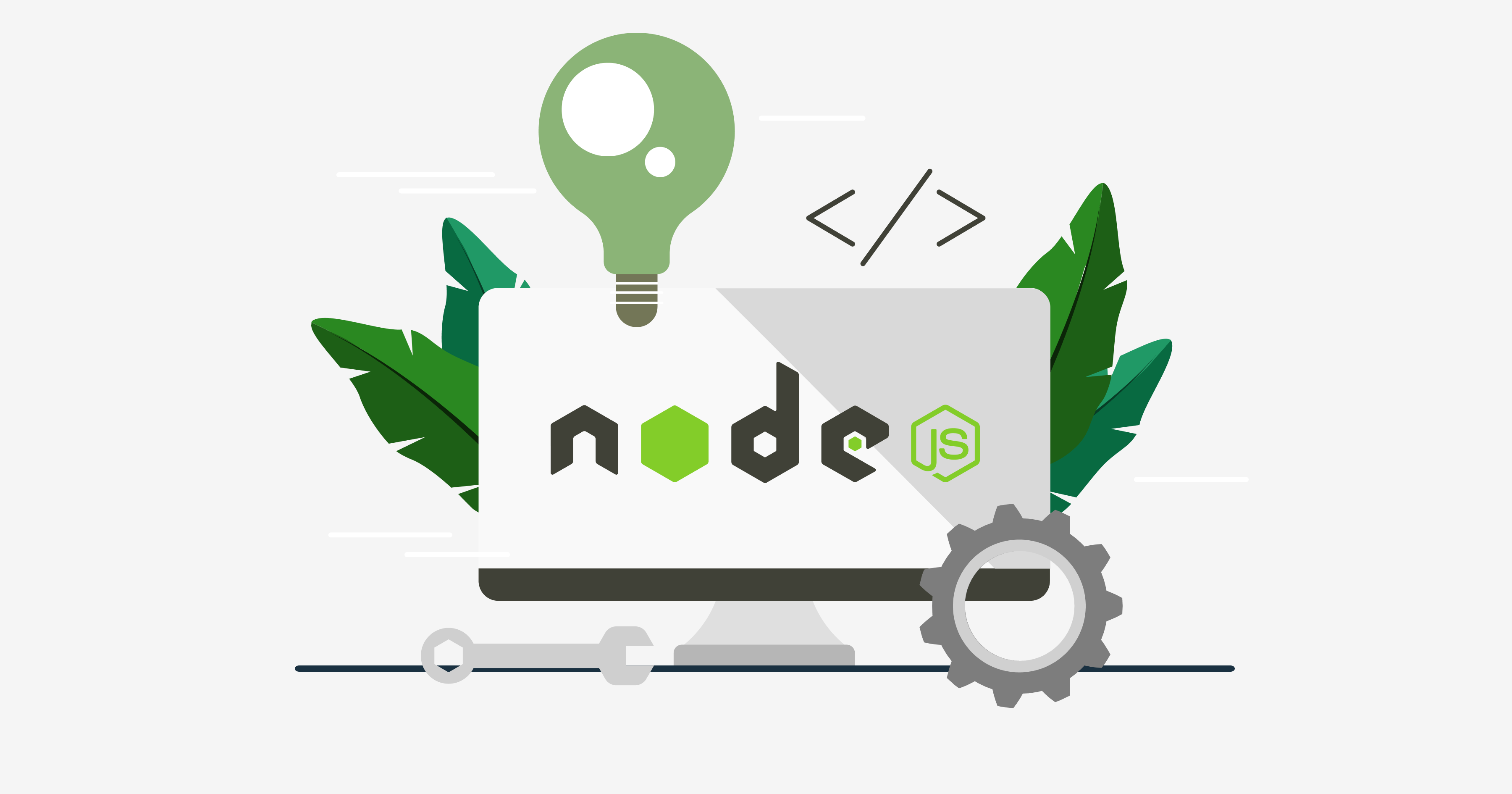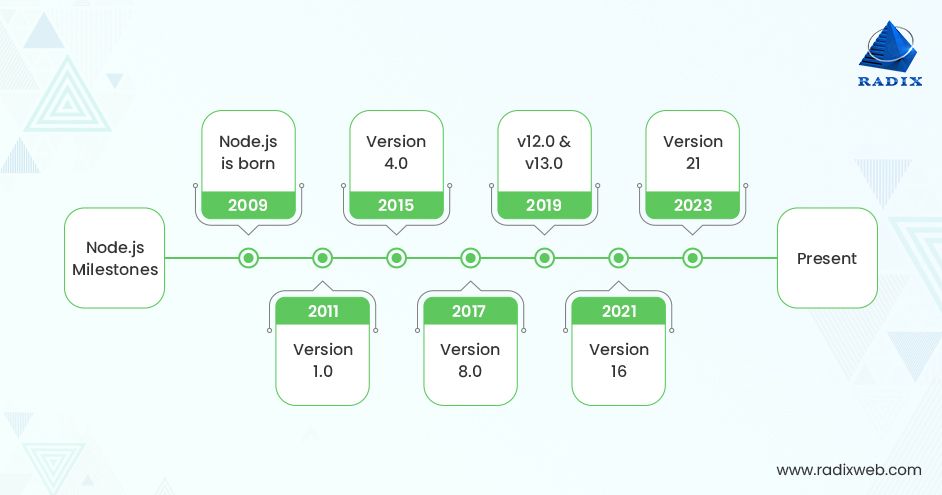The History of Node.js: From Inception to Global Adoption
 SANKALP HARITASH
SANKALP HARITASH
When I first started diving into web development, I quickly realized that the way we build and scale applications was evolving rapidly. One tool that kept popping up in conversations was Node.js. Curious about its impact and how it became such a game-changer, I decided to dig deeper into its history. What I found was a fascinating story of innovation, frustration, and community-driven growth that has shaped modern web development in profound ways.

The Birth of Node.js
My journey into understanding Node.js took me back to 2009, a time when web servers were quite different from what we know today. Back then, servers typically handled requests in a synchronous manner—one at a time. This might sound fine for small-scale applications, but as I learned, it led to significant inefficiencies, especially when dealing with a large number of simultaneous connections.
Enter Ryan Dahl, a software engineer who saw the limitations of these traditional servers and wanted to create something better. What struck me most was how Ryan’s frustration with existing solutions sparked his creativity. He became fascinated with Google’s V8 JavaScript engine, which was designed to run JavaScript code blazingly fast in web browsers. Ryan realized that if he could pair V8 with an event-driven, non-blocking I/O model, he could revolutionize server performance.
In 2009, Ryan introduced Node.js at a European JavaScript conference, and that’s where everything changed. Developers, like myself, who were tired of the constraints of existing web servers, quickly saw the potential in what Ryan had created. Node.js wasn’t just another tool—it was a breath of fresh air.
The Rise of Node.js
As I continued exploring Node.js, I saw how quickly it gained momentum. Real-time applications like chat rooms, online gaming, and collaborative tools were all the rage, and Node.js seemed tailor-made for these use cases. Its ability to handle thousands of simultaneous connections without breaking a sweat was exactly what developers were looking for.
By 2010, Node.js had caught the eye of Joyent, a cloud infrastructure company. Joyent’s backing was a turning point, providing the resources needed to accelerate Node.js's growth. This was when the project started maturing, and a vibrant community began to form around it. I realized that Node.js’s rise wasn’t just about the technology itself, but also about the community that supported and nurtured it.
The V8 Engine: The Power Behind Node.js
One of the most exciting discoveries for me was understanding the role of Google’s V8 engine in Node.js's success. V8 wasn’t just fast—it was incredibly efficient, thanks to its just-in-time (JIT) compilation, which translated JavaScript into native machine code before running it. This meant that Node.js could deliver performance levels comparable to low-level languages like C++.
As I experimented with Node.js, I began to appreciate how V8’s speed and efficiency were integral to its appeal. Whether I was building small-scale projects or thinking about larger applications, knowing that V8 was powering Node.js gave me confidence in its ability to handle whatever I threw at it.
Node.js Expands
By 2011, Node.js had become a staple in the web development world. Major companies like LinkedIn, Walmart, and PayPal started adopting it, and this was a clear sign that Node.js was more than just a niche tool—it was ready for prime time.
Then came 2012, and with it, the introduction of npm (Node Package Manager). For me, npm was a game-changer. It made sharing and reusing code incredibly simple, and suddenly, the possibilities seemed endless. The explosion of open-source libraries and tools built on Node.js meant that development became faster and more efficient. I could now tap into a vast ecosystem that was growing by the day, and this made working with Node.js even more exciting.
The Fork and Unification
However, like any growing project, Node.js faced challenges. In 2014, a split within the community led to the creation of io.js, a fork of the original Node.js project. The fork was driven by a desire for more open governance and quicker release cycles. This was a tense moment, and as someone following the developments, I wondered how it would all play out.
Thankfully, by 2015, the two projects merged back together under the Node.js Foundation, a nonprofit organization set up to guide its development. This unification brought stability and clarity, and it was a relief to see the community come together for the greater good of the project.
Node.js Today
Fast forward to today, and Node.js is everywhere. It’s not just a tool for building web applications; it’s a platform for APIs, desktop apps, and so much more. The ecosystem has grown exponentially, and it’s amazing to see how millions of developers around the world, including myself, rely on Node.js to power their applications.
Whether I’m working on small projects or contributing to larger ones, Node.js is a go-to tool in my arsenal. Companies of all sizes, from startups to tech giants like Netflix and Microsoft, trust Node.js to handle their workloads, and that speaks volumes about its reliability and performance.
Conclusion
Looking back on the history of Node.js, I’m reminded of the power of innovation and community. What started as one developer’s frustration has grown into a global phenomenon that has transformed the way we build and scale web applications. For me, Node.js isn’t just a tool—it’s a testament to what’s possible when we push the boundaries of what’s possible and work together to build something truly remarkable.
As I continue my journey in web development, Node.js will undoubtedly remain a cornerstone of my work, and I’m excited to see where it will take us in the years to come.
Subscribe to my newsletter
Read articles from SANKALP HARITASH directly inside your inbox. Subscribe to the newsletter, and don't miss out.
Written by

SANKALP HARITASH
SANKALP HARITASH
Hey 👋🏻, I am , a Software Engineer from India. I am interested in, write about, and develop (open source) software solutions for and with JavaScript, ReactJs. 📬 Get in touch Twitter: https://x.com/SankalpHaritash Blog: https://sankalp-haritash.hashnode.dev/ LinkedIn: https://www.linkedin.com/in/sankalp-haritash/ GitHub: https://github.com/SankalpHaritash21 📧 Sign up for my newsletter: https://sankalp-haritash.hashnode.dev/newsletter